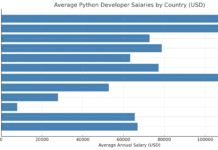Key Takeaways
- Rising Demand for Tech Talent – The technology sector is expanding rapidly, with high demand for software engineers, cybersecurity experts, and AI specialists.
- Labor Shortages & Workforce Challenges – Outmigration, conscription, and skill gaps are creating significant hiring difficulties across multiple industries.
- Growth of Digital & Remote Hiring – Employers are leveraging AI-driven recruitment, online job portals, and remote work to overcome local hiring constraints.
Myanmar’s job market has undergone significant transformations in recent years, shaped by economic shifts, political developments, and global trends.
As we enter 2025, recruitment and hiring practices in the country reflect a complex interplay of challenges and opportunities for both job seekers and employers.

Despite ongoing economic fluctuations and regulatory changes, Myanmar’s workforce remains a critical driver of its growth potential.
Various industries, including manufacturing, information technology, finance, and hospitality, continue to evolve, demanding new skills and adaptation from employees and businesses alike.
Meanwhile, the rise of digital recruitment platforms, remote work opportunities, and shifting employer expectations are redefining the traditional hiring landscape.
In the past, Myanmar’s job market was largely influenced by traditional hiring practices, with personal connections playing a significant role in securing employment.
However, 2025 sees an increasing reliance on data-driven recruitment, digital job portals, and social media hiring strategies.
This shift is in response to a more tech-savvy workforce and the growing influence of international business standards.
Another key factor shaping recruitment in Myanmar is the country’s labor laws and government policies.
Changes in employment regulations, minimum wage adjustments, and worker rights protections directly impact how companies approach hiring.
Additionally, the economic climate—whether marked by stability or uncertainty—affects job availability and workforce demand.
For businesses, finding the right talent remains a priority, but employers now face new challenges, such as skills shortages in specialized sectors, talent retention issues, and rising expectations from job seekers.
Employees are increasingly seeking better compensation, professional development opportunities, and a healthier work-life balance, forcing companies to rethink their employment packages and workplace cultures.
Furthermore, foreign investments and international partnerships continue to influence Myanmar’s hiring trends. Companies with global ties often introduce modern recruitment strategies, competitive salary structures, and advanced training programs, raising the overall expectations of the workforce.
However, economic sanctions, foreign policy changes, and geopolitical factors can also impact the availability of foreign job opportunities and business operations.
The rise of automation and artificial intelligence in recruitment processes is another trend reshaping Myanmar’s job market in 2025.
Businesses are leveraging AI-driven resume screening, automated interview scheduling, and data analytics to streamline their hiring strategies.
While these advancements enhance efficiency, they also bring concerns about job displacement and the need for upskilling the workforce to remain relevant in the digital age.
Moreover, Myanmar’s youth population plays a vital role in the future of recruitment.
With a growing number of university graduates and vocational training program participants, employers have access to a fresh talent pool.
However, bridging the gap between academic education and industry needs remains a challenge, making skill development initiatives and on-the-job training essential components of workforce development.
As we analyze the state of recruitment and hiring in Myanmar in 2025, it becomes clear that adaptability and innovation are key for businesses and job seekers alike.
Whether through embracing digital transformation, staying informed about labor laws, or investing in employee well-being, the way companies approach hiring will determine their success in this evolving landscape.
In this in-depth report, we will explore the latest hiring trends, sector-specific employment insights, challenges facing recruiters, and opportunities for job seekers in Myanmar.
By understanding the current dynamics of the job market, businesses can refine their recruitment strategies, and professionals can better position themselves for career success in 2025 and beyond.
Before we venture further into this article, we would like to share who we are and what we do.
About 9cv9
9cv9 is a business tech startup based in Singapore and Asia, with a strong presence all over the world.
With over nine years of startup and business experience, and being highly involved in connecting with thousands of companies and startups, the 9cv9 team has listed some important learning points in this overview of the The State of Recruitment and Hiring in Myanmar (Burma) in 2025.
If your company needs recruitment and headhunting services to hire top-quality employees, you can use 9cv9 headhunting and recruitment services to hire top talents and candidates. Find out more here, or send over an email to [email protected].
Or just post 1 free job posting here at 9cv9 Hiring Portal in under 10 minutes.
The State of Recruitment and Hiring in Myanmar (Burma) in 2025
- Challenges, Trends, and Future Prospects
- Key Industries Driving Recruitment and Hiring in Myanmar (Burma) in 2025
- Demand for Skills and Job Roles in Myanmar (Burma) in 2025
- Recruitment Methods and Hiring Platforms in Myanmar (Burma) in 2025
- Compensation and Benefits Trends in Myanmar (Burma) in 2025
- Emerging Trends and Shifts in Recruitment and Hiring Practices in Myanmar (Burma) in 2025
- Quantitative Data and Employment Statistics in Myanmar (Burma) in 2025
- Challenges and Opportunities in the Myanmar Recruitment Landscape (2025)
- Challenges for Job Seekers in Myanmar (Burma) – 2025
- Opportunities for Employers in the Evolving Myanmar Job Market – 2025
- Opportunities for Job Seekers in Myanmar’s 2025 Job Market
- Strategic Recommendations for Recruitment and Hiring in Myanmar (2025)
1. Challenges, Trends, and Future Prospects
Recruitment and hiring in Myanmar (Burma) in 2025 remain highly volatile, shaped by a complex mix of economic downturn, political instability, workforce migration, and shifting labor market dynamics. The ongoing conflict, economic contraction, and regulatory challenges have placed significant strain on both employers and job seekers.
While certain industries continue to adapt to these challenges through digital transformation and alternative hiring strategies, the overall job market remains constrained. This comprehensive analysis examines the key factors influencing Myanmar’s recruitment landscape in 2025, including economic conditions, workforce shortages, employer hiring challenges, and sector-specific trends.
Economic and Political Climate: The Foundations of Hiring Challenges
Myanmar’s economic and political environment in 2025 plays a crucial role in shaping the labor market. Businesses and job seekers alike face unprecedented challenges due to economic downturns, high inflation, forced conscription, and mass workforce migration.
Economic Contraction and Its Impact on Employment
- Multiple economic forecasts predict Myanmar’s economy will contract in 2025.
- BMI (a unit of Fitch Solutions) projects a 2% shrinkage for the fiscal year ending March 2025.
- The World Bank estimates a 1% contraction, though some experts consider this to be overly optimistic.
- BMI further expects a 2.5% contraction, with no significant recovery in 2026, keeping the economy below its 2020 levels.
- High inflation, exacerbated by excessive money printing by the ruling State Administration Council (SAC), continues to weaken consumer purchasing power.
- Employers are under pressure to control labor costs, while employees demand higher wages to offset rising living expenses.
Political Instability and Workforce Disruptions
- The ongoing civil war continues to create a bleak economic outlook for 2025-26.
- Humanitarian crises have escalated, with 19.9 million people requiring assistance in 2025.
- The military junta’s forced conscription law (enacted in February 2024) has led to widespread workforce depletion.
- Many skilled professionals and potential workers have fled the country, leading to a shrinking talent pool.
- By April 2024, 28% of businesses reported resignations due to migration, up from 11% in 2023.
- This talent exodus threatens to reduce productivity across key sectors and deter foreign investments.
Rise of Informal and Illicit Economic Activity
- The formal job market struggles, leading many displaced workers to seek opportunities in informal sectors.
- Informal employment typically lacks job security, social benefits, and legal protections.
- Some businesses opt for informal hiring to circumvent regulatory and tax burdens, further reducing the scope of the formal labor market.
Key Hiring Trends and Recruitment Challenges in Myanmar (Burma) in 2025
Myanmar’s job market in 2025 presents several distinct trends, shaped by workforce shortages, shifting employment models, and the increasing role of technology in recruitment.
1. Widespread Workforce Shortages
- The rapid depletion of skilled workers due to migration and conscription has left businesses struggling to fill key positions.
- Industries reliant on young male workers (e.g., construction, manufacturing, logistics) face acute labor shortages.
- Companies are offering higher salaries and benefits to retain remaining talent, leading to rising operational costs.
2. The Shift Toward Remote and Gig Work
- Economic and political instability has pushed many professionals to seek remote jobs with international companies.
- Freelancing and gig economy work, particularly in digital marketing, IT, and online customer service, have gained popularity.
- Many Myanmar-based professionals prefer foreign clients, offering services via platforms like Upwork and Fiverr.
3. Increasing Reliance on Digital Recruitment Platforms
- Traditional hiring methods, once reliant on personal connections and in-person networking, are being replaced by digital job portals.
- Online job platforms such as JobNet, MyJobs, and LinkedIn are seeing increased engagement.
- Social media, particularly Facebook recruitment groups, plays a key role in informal job placements.
4. Growing Demand for Skilled and Multilingual Workers
- Due to economic uncertainty, companies are prioritizing skilled professionals who can adapt to changing market conditions.
- Proficiency in English, Thai, and Chinese is highly valued, especially for roles in finance, international trade, and customer service.
- IT, digital marketing, and e-commerce skills remain in high demand as businesses pivot towards online operations.
Sector-Specific Hiring Trends: Who Is Hiring and Who Is Struggling?
Certain industries are better positioned to navigate Myanmar’s turbulent hiring landscape, while others struggle due to workforce shortages and economic downturns.
Industries Facing Severe Hiring Challenges
- Manufacturing & Construction
- Labor shortages due to conscription and migration.
- Foreign companies scaling back operations due to uncertainty.
- Retail & Hospitality
- Reduced consumer spending due to inflation.
- High employee turnover as workers seek more stable opportunities abroad.
- Financial Services
- Banks and financial institutions struggling with currency volatility and regulatory instability.
- Many professionals leaving the country to work for foreign financial firms.
Industries Experiencing Growth Despite Challenges
- Technology & IT Services
- Increasing demand for software development, cybersecurity, and digital marketing professionals.
- Many tech workers shift to remote employment for international companies.
- Agriculture & Food Production
- Essential sector, but impacted by supply chain disruptions and rising costs.
- Some agribusinesses benefit from export-driven demand.
- Healthcare & Pharmaceuticals
- Increased demand for medical professionals due to ongoing humanitarian crises.
- International NGOs and aid organizations hiring healthcare workers and logistics personnel.
The Future of Recruitment in Myanmar: Outlook for 2025 and Beyond
Given the current economic and political climate, the job market in Myanmar is expected to remain highly volatile throughout 2025.
Key Predictions and Future Challenges
- Continued Workforce Migration
- Brain drain will likely worsen as skilled professionals seek opportunities abroad.
- Companies will struggle to find experienced workers locally.
- Rising Wage Pressures
- Employers will face increasing labor costs as employees demand higher wages to cope with inflation.
- Many businesses may resort to automation or outsourcing to cut expenses.
- Digital Transformation in Recruitment
- More companies will shift to online hiring platforms to reach a broader talent pool.
- AI-driven recruitment tools and virtual interviews will become more common.
- Policy and Regulatory Uncertainty
- Changing labor laws and economic instability will continue to affect hiring decisions.
- Foreign investors may remain cautious, impacting job creation and business expansion.
Conclusion: Navigating an Uncertain Job Market
Recruitment and hiring in Myanmar in 2025 remain deeply affected by economic downturns, political instability, and workforce shortages. Businesses must adopt adaptive hiring strategies, leveraging digital recruitment tools, competitive compensation packages, and remote work opportunities to attract and retain talent.
For job seekers, flexibility, skill development, and multilingual proficiency will be crucial in securing employment, whether within Myanmar or abroad. As the country navigates these challenging times, the labor market’s ability to adapt to new realities will determine its long-term resilience and growth prospects.
2. Key Industries Driving Recruitment and Hiring in Myanmar (Burma) in 2025
Despite economic uncertainty and widespread workforce challenges, several industries in Myanmar continue to drive hiring activity in 2025. While some sectors are struggling with declining productivity and labor shortages, others are demonstrating resilience and even growth. Businesses operating in essential services, technology, finance, and infrastructure-related fields continue to generate employment opportunities, ensuring that job seekers have viable career paths despite the broader economic downturn.
This analysis provides an overview of the top industries hiring in Myanmar, their current market trends, and future employment prospects.
Top Hiring Industries in Myanmar in 2025
An analysis of job postings from JobNet.com.mm in March 2025 highlights the top 10 industries with the highest demand for workers:
- Banking, Insurance, and Microfinance
- Trading, Distribution, Import, and Export
- Fast-Moving Consumer Goods (FMCG)
- Food and Beverage / Catering
- Education and Training
- Telecommunications
- Manufacturing
- Construction, Building, and Architecture
- Energy, Water, Oil & Gas, and Waste Management
- Information Technology (IT) and Computer Services
Factors Driving Hiring in These Industries
- Essential services, such as finance, trade, and food production, remain operational despite economic instability, requiring a steady workforce.
- The IT sector continues expanding, driven by digital transformation and foreign investments in telecommunications.
- The construction and manufacturing industries, while affected by workforce shortages, still require skilled labor to complete ongoing projects.
- Education and training remain crucial as businesses and individuals focus on upskilling to meet changing market demands.
- The energy and infrastructure sectors play a key role in Myanmar’s economic sustainability, ensuring job opportunities for professionals in engineering, utilities, and environmental management.
The Technology Sector: A Major Driver of Employment Growth
Among all industries, Myanmar’s technology sector is witnessing some of the most significant growth in 2025. This trend is fueled by digital adoption, foreign investment, and the increasing role of IT in business operations.
Expansion of the ICT Market
- Myanmar’s ICT (Information and Communication Technology) market is expected to grow substantially, making it a critical sector for job creation.
- Smartphone adoption is projected to reach 67.2 million users, indicating a digitally connected population that relies on mobile services for business and personal needs.
- The software market alone is expected to be worth $231 million by 2029, providing a strong foundation for software development and IT service-related employment.
Growth of IT Services and Cybersecurity
- IT services are expanding at an annual growth rate of 6.38%, creating new opportunities for professionals in cloud computing, software engineering, and tech support.
- Cybersecurity is becoming a high-priority industry, with expected market growth of 14.10% by 2025, driven by increased reliance on digital transactions and online security needs.
- Myanmar’s digital economy is projected to grow by 18.2% annually, reaching $4.5 billion by 2025, which will further increase demand for skilled IT professionals.
Investment in Telecommunications and Digital Infrastructure
- Companies such as Huawei and Ooredoo are investing in 5G infrastructure and cloud services, creating new jobs in network engineering, data management, and telecommunications.
- Digital transformation contributes up to 3% of Myanmar’s GDP, making it a cornerstone of economic recovery and workforce development.
- The rapid adoption of digital technologies across multiple industries—ranging from e-commerce to financial services—fuels demand for IT specialists, data analysts, and software developers.
Industry-Specific Hiring Trends and Job Opportunities
While the technology sector stands out for its rapid growth, several other industries continue to drive recruitment despite economic challenges.
1. Banking, Finance, and Microfinance
- One of Myanmar’s most resilient sectors, continuing to hire professionals in banking operations, financial management, and risk assessment.
- Microfinance institutions are expanding as demand for small business loans and financial inclusion grows.
- Digital banking services are increasing in popularity, leading to higher demand for fintech specialists and IT professionals in financial institutions.
2. Trading, Import/Export, and Distribution
- International trade remains crucial to Myanmar’s economy, ensuring employment in logistics, supply chain management, and import/export operations.
- The need for skilled professionals in customs management, procurement, and distribution is rising, as businesses navigate complex international trade regulations.
3. Fast-Moving Consumer Goods (FMCG) and Retail
- Despite economic challenges, essential consumer goods continue to drive demand for production and sales professionals.
- Multinational FMCG companies operating in Myanmar require supply chain managers, brand marketers, and retail strategists.
- E-commerce platforms are growing, offering new opportunities in digital marketing, online sales, and customer service.
4. Food and Beverage / Catering
- Restaurants, food manufacturers, and hospitality businesses require skilled labor to meet consumer demand.
- The rise of online food delivery services has created job openings in logistics, packaging, and digital ordering systems.
5. Education and Training
- Increased demand for English-language education, vocational training, and professional development programs.
- A growing number of institutions are offering online courses, creating employment opportunities for digital educators and content developers.
6. Manufacturing and Industrial Production
- While affected by workforce shortages, the sector still requires skilled labor in factory operations, maintenance, and quality control.
- Growth in Myanmar’s industrial zones is driving demand for engineers, technicians, and supply chain managers.
7. Construction, Building, and Infrastructure
- Despite economic difficulties, infrastructure projects remain active, requiring architects, civil engineers, and project managers.
- Urban development initiatives continue to generate jobs in construction management, site supervision, and real estate planning.
8. Energy, Oil & Gas, and Environmental Services
- Myanmar’s reliance on energy production supports employment in petroleum engineering, renewable energy, and environmental consulting.
- Water and waste management sectors are expanding, creating job opportunities in sustainability and infrastructure development.
Future Outlook for Hiring and Employment Trends in Myanmar
Looking ahead, Myanmar’s job market in 2025 will continue to be shaped by economic recovery efforts, digital transformation, and shifting workforce dynamics.
Key Factors Influencing Future Hiring Trends
- Continued investment in technology and digital infrastructure will drive demand for IT professionals and cybersecurity experts.
- Essential industries such as banking, trade, and food production will remain stable employment providers.
- Workforce shortages due to migration and conscription may lead to higher wages and talent retention challenges in multiple sectors.
- The rise of remote work and freelancing will provide alternative employment opportunities for skilled professionals.
- Foreign direct investment (FDI) and regulatory changes will impact hiring trends in manufacturing, energy, and industrial development.
Conclusion: Opportunities Amidst Challenges
While Myanmar faces significant economic and political headwinds in 2025, certain industries continue to provide job opportunities for professionals with the right skills and expertise. The technology sector stands out as a major driver of employment growth, offering high-paying roles in IT services, cybersecurity, and digital transformation. Meanwhile, banking, trade, manufacturing, and essential consumer goods industries remain steady sources of employment, despite broader market challenges.
For job seekers, investing in upskilling, language proficiency, and digital literacy will be essential to navigating Myanmar’s evolving labor market. Employers, on the other hand, must adapt their hiring strategies, embrace digital recruitment methods, and offer competitive compensation packages to attract and retain talent in a highly competitive environment.
3. Demand for Skills and Job Roles in Myanmar (Burma) in 2025
The job market in Myanmar in 2025 is shaped by shifting industry needs, technological advancements, and workforce challenges caused by political and economic instability. The demand for specific skills and job roles reflects both global employment trends and the unique challenges faced by Myanmar’s labor market.
As businesses adapt to digital transformation, economic hardships, and labor shortages, employers are prioritizing technical expertise, digital literacy, and soft skills. At the same time, a shrinking workforce due to outmigration and forced conscription is exacerbating skill gaps across multiple industries, making recruitment increasingly competitive.
This analysis examines the most in-demand job roles, skills, and hiring challenges in Myanmar’s employment market in 2025.
High-Demand Skills in Myanmar’s Job Market
As businesses continue to embrace digitalization and automation, technical skills related to IT, cybersecurity, and data analytics are in high demand. However, traditional business functions and soft skills remain critical in ensuring company operations run smoothly.
1. Top Technical Skills in Demand
Several technical skills have become essential for Myanmar’s evolving job market, particularly in IT, cybersecurity, and data science.
- Programming and Software Development
- Python, Java, and React are among the most sought-after programming languages.
- Full-Stack Developers remain highly desirable due to their ability to manage both front-end and back-end development.
- AI and cloud computing expertise are increasingly required across various industries.
- Cybersecurity and IT Infrastructure
- The growing digital economy has heightened the need for cybersecurity professionals, with skills in application security, cloud protection, and incident response being particularly valuable.
- Myanmar’s cybersecurity job market is projected to grow by 14.10% in 2025, making this a key employment sector.
- Data Science and Analytics
- The Myanmar Computer Federation projects a 22% increase in demand for data professionals by 2025.
- Companies are actively seeking employees skilled in data interpretation, business intelligence, and predictive analytics to drive strategic decision-making.
2. Essential Business and Administrative Skills
Beyond technical expertise, businesses require professionals who can support fundamental operations. Core skills in finance, human resources, and project management remain vital to sustaining economic activity.
- Financial Management & Accounting
- Expertise in finance, auditing, and risk management remains essential for stabilizing businesses in Myanmar’s challenging economic climate.
- Professionals in microfinance and banking are particularly in demand due to increased financial inclusion efforts.
- Human Resource Management & Recruitment
- Given the workforce shortages caused by migration and conscription, businesses require skilled HR professionals to manage hiring strategies, talent retention, and employee development.
- Project & Operations Management
- Industries such as manufacturing, construction, and logistics rely on experienced professionals who can oversee complex projects, ensuring efficiency and profitability.
3. Growing Importance of Soft Skills
Employers are increasingly prioritizing soft skills alongside technical abilities, recognizing that adaptability, problem-solving, and leadership are critical for long-term business success.
- Communication & Language Proficiency
- Strong written and verbal communication skills are in demand, particularly English proficiency for international business roles.
- However, language barriers remain a challenge, as many job seekers are still in the process of learning English.
- Problem-Solving & Critical Thinking
- Employers highly value individuals who can navigate complex challenges, especially in an unpredictable business environment.
- Leadership & Teamwork
- Businesses require managers, team leaders, and collaborative professionals who can drive productivity and innovation.
- Adaptability & Digital Literacy
- The increasing reliance on digital tools in business operations means employees must be comfortable with technology and evolving work environments.
Most In-Demand Job Roles in Myanmar in 2025
Despite Myanmar’s economic challenges, various job functions remain essential to business operations. A March 2025 job market analysis from JobNet.com.mm identifies the top 10 most in-demand job roles:
- Sales & Business Development
- Strong demand for professionals who can drive revenue and secure new business opportunities.
- Sales representatives and account managers remain crucial across multiple industries, including FMCG, finance, and IT services.
- Finance, Accounting & Audit
- Accountants, financial analysts, and auditors are needed to help businesses manage financial risks and navigate economic uncertainty.
- Marketing, Media & Creative
- Digital marketing specialists, content creators, and branding experts are in high demand as businesses shift towards online advertising and social media engagement.
- IT Hardware & Software
- Companies require IT support specialists, network engineers, and software developers to keep digital systems operational and secure.
- Engineering, Technical & HSE (Health, Safety, Environment)
- Industries such as construction, manufacturing, and energy continue to need engineers, quality assurance specialists, and safety officers.
- HR, Training & Recruitment
- With rising employee turnover, businesses are increasing their investment in HR professionals to focus on workforce retention, talent acquisition, and employee engagement.
- Administrative Roles
- Secretarial, executive assistant, and office management positions remain important for maintaining business operations.
- Customer Service & Support
- The demand for customer support representatives remains steady in banking, telecom, and e-commerce sectors.
- Logistics, Warehousing & Port Operations
- The trading and import/export sector relies on skilled professionals in supply chain management and logistics coordination.
- Project & Operations Management
- Businesses require strategic planners and project managers to oversee long-term business initiatives and optimize resources.
Workforce Challenges: Skill Gaps and Labor Shortages
While Myanmar has a growing demand for skilled professionals, the available labor supply is shrinking due to multiple factors, including forced conscription, outmigration, and educational limitations.
1. Shrinking Workforce Due to Migration & Conscription
- Myanmar’s labor market has been significantly impacted by forced conscription, causing thousands of workers—especially young men—to flee the country.
- Reports indicate that over a million people have sought refuge in neighboring Thailand, worsening workforce shortages.
2. Skill Gaps in Key Sectors
- While tech-related jobs are expanding, many job seekers lack the necessary skills in programming, cybersecurity, and data analytics.
- Industries such as manufacturing and construction struggle to find experienced engineers and technical professionals due to outmigration.
3. Language Barriers and Digital Literacy Gaps
- English proficiency remains a barrier for many job seekers, particularly in industries that require international communication.
- Limited access to digital education has resulted in lower digital literacy levels among workers, creating challenges for businesses adopting new technologies.
Conclusion: The Future of Recruitment and Skills Development in Myanmar
The demand for skilled professionals in Myanmar is rising, particularly in IT, cybersecurity, finance, and project management. However, businesses face increasing difficulties in sourcing qualified candidates due to workforce shortages and skill gaps.
To address these challenges, employers and job seekers must adapt to the evolving market:
- Businesses should invest in employee training programs, particularly in technical fields such as IT, cybersecurity, and data analytics.
- Job seekers should focus on digital literacy, language proficiency, and soft skill development to improve employability.
- Policymakers and educational institutions need to expand access to vocational training and reskilling programs to meet labor market demands.
While the hiring landscape in Myanmar remains uncertain, sectors that embrace innovation, training, and adaptability will be best positioned for long-term success.
4. Recruitment Methods and Hiring Platforms in Myanmar (Burma) in 2025
The recruitment and hiring landscape in Myanmar in 2025 is evolving due to technological advancements, labor market constraints, and changing employer strategies. Companies operating in Myanmar must navigate various hiring challenges, including compliance with local labor laws, workforce shortages, and the need for cost-effective recruitment solutions.
To attract and retain talent, businesses utilize multiple recruitment strategies, from traditional hiring methods to digital job platforms and professional networking. The rise of online job portals, recruitment agencies, and social media-based hiring is transforming Myanmar’s employment market, making job opportunities more accessible while streamlining the recruitment process for employers.
This section explores the most prominent recruitment methods and platforms used in Myanmar in 2025.
Key Hiring Methods Used by Companies in Myanmar
Companies in Myanmar adopt various recruitment approaches depending on their business structure, hiring needs, and regulatory considerations.
1. Direct Hiring Through a Local Entity
- Establishing a local company in Myanmar enables businesses to hire employees directly, giving them full control over recruitment, payroll, and compliance.
- However, setting up a local entity can be costly and time-consuming, requiring adherence to Myanmar’s labor laws, tax regulations, and employment contracts.
- Employers must provide written employment contracts within 30 days of hiring, covering job descriptions, working hours, salaries, and benefits.
2. Partnering with an Employer of Record (EOR)
- Many foreign companies use Employer of Record (EOR) services to simplify hiring in Myanmar without establishing a local entity.
- EOR providers handle payroll, taxes, and legal compliance, reducing administrative burdens for businesses.
- This method is particularly useful for companies testing the Myanmar market or expanding with minimal legal risks.
3. Hiring Independent Contractors
- Engaging freelancers and independent contractors offers companies greater flexibility, especially in sectors like IT, design, and digital marketing.
- However, misclassification risks exist, as Myanmar labor laws differentiate between full-time employees and independent workers.
- Employers must ensure proper contractual agreements to avoid legal disputes.
These diverse hiring methods allow businesses to customize their recruitment strategies based on their operational needs and risk tolerance.
Digital Job Portals: The Rising Trend in Online Recruitment
As Myanmar embraces digital transformation, online job portals have become a major recruitment channel, connecting job seekers with employers across various industries.
1. Leading Job Portals in Myanmar
- JobNet.com.mm
- One of Myanmar’s most widely used job platforms for white-collar professionals and companies across multiple sectors.
- Hosted a career fair in March 2025, attracting over 2,600 job seekers, demonstrating its growing role in digital recruitment.
- JobExpress
- A recruitment and employment website offering job postings in diverse industries, ranging from entry-level to executive roles.
- 9cv9 Job Portal
- A regional job search platform catering to Myanmar and other Southeast Asian markets, connecting employers with skilled professionals.
- Provides AI-driven job matching and career resources to enhance job seeker experiences.
- MyJobs and JobsInYangon
- Popular among technology and IT professionals, offering specialized job listings for developers, software engineers, and cybersecurity experts.
The growing reliance on job portals indicates a shift toward digital hiring, especially for companies seeking cost-effective and scalable recruitment solutions.
The Role of Recruitment Agencies in Myanmar’s Hiring Market
Recruitment agencies play a pivotal role in Myanmar’s hiring process, particularly for specialized, senior-level, and executive positions.
1. Top Recruitment Agencies in Myanmar
- 9cv9 Recruitment Agency
- A trusted recruitment firm operating across Myanmar and Southeast Asia, specializing in executive hiring, tech talent acquisition, and workforce solutions.
- Helps businesses identify top candidates for mid-to-senior-level positions.
- JB Hired
- Specializes in executive recruitment across Asia Pacific and the Middle East/North Africa (MENA).
- Focuses on sourcing high-caliber professionals for leadership roles.
- Prudential Myanmar’s Hiring Initiatives
- The financial services company actively recruits through JobNet.com.mm to fill Agency Recruitment Executive roles, showcasing the growing reliance on external hiring platforms.
These agencies provide valuable expertise, established networks, and industry-specific recruitment solutions, helping companies fill high-demand job roles efficiently.
Professional Networking: A Key Tool for Recruitment
Beyond traditional hiring methods, networking has become an essential tool for job seekers and employers in Myanmar.
1. The Rise of LinkedIn in Myanmar
- LinkedIn’s user base in Myanmar has grown to 828,800 professionals in 2025, making it a key platform for career development and job opportunities.
- Employers increasingly use LinkedIn for headhunting, candidate outreach, and brand visibility.
2. In-Person Networking Events & Conferences
- The First Intra-Chambers Networking Event (March 2025) provided a platform for industry professionals to connect, exchange ideas, and explore career opportunities.
- Conferences and business summits in finance, technology, and trade serve as recruitment hubs for industry-specific roles.
The increasing reliance on professional networking—both online and offline—highlights the importance of connections in career advancement and hiring in Myanmar.
Conclusion: The Future of Recruitment in Myanmar
Recruitment in Myanmar in 2025 is becoming more dynamic, technology-driven, and strategically focused as businesses adapt to a shifting labor market.
Key Takeaways for Employers
- Digital job portals are leading the hiring transformation, with platforms like 9cv9 Job Portal, JobNet.com.mm, and JobExpress playing a vital role.
- Recruitment agencies provide specialized hiring solutions, making them essential for executive searches and skilled talent acquisition.
- Employer of Record (EOR) services simplify hiring for foreign companies, reducing legal risks and administrative burdens.
Key Takeaways for Job Seekers
- Online networking and digital job applications are becoming standard hiring practices—job seekers should optimize their LinkedIn profiles and engage in online job portals.
- Soft skills, professional networking, and continuous learning are becoming just as important as technical qualifications.
- Attending industry events and career fairs can provide valuable connections and job opportunities.
The hiring landscape in Myanmar is rapidly evolving, and businesses and job seekers must embrace digital transformation and strategic recruitment practices to stay competitive.
5. Compensation and Benefits Trends in Myanmar (Burma) in 2025
The state of compensation and benefits in Myanmar in 2025 reflects shifting economic conditions, industry-specific demands, and evolving employee expectations. Salaries vary significantly depending on job roles, experience levels, industry sectors, and employer types. Additionally, companies are enhancing employee benefits to improve talent retention and workforce satisfaction in an increasingly competitive hiring environment.
This analysis provides insights into salary trends across various professions, sector-specific compensation levels, and emerging employee benefits that shape Myanmar’s job market in 2025.
General Salary Trends in Myanmar (Burma) in 2025
Salaries in Myanmar remain highly dependent on the industry, job function, and seniority level. The majority of the workforce falls within a specific salary range, with additional compensation available through bonuses, overtime pay, and performance-based incentives.
1. General Salary Ranges in Myanmar
- The average monthly salary range for employees in Myanmar falls between 315,583 MMK and 1,211,450 MMK, including bonuses.
- Approximately 80% of the working population earns between 316,000 MMK and 1.2 million MMK per month, indicating that most salaries remain within this bracket.
- Overtime pay is regulated by labor laws, with a maximum of 12 overtime hours per week, compensated at 200% of the standard hourly wage.
- Myanmar’s minimum wage, as of the latest official update, was 4,800 MMK per day (as of 2022). However, wages in most sectors have adjusted due to inflation and changing economic conditions.
2. Salary Variations by Industry and Job Role
- Salary levels differ significantly based on job function and industry demand.
- Average monthly salaries for key roles in Myanmar include:
- Accounting Manager – 810,000 MMK
- Software Engineer – 510,000 MMK
- Data Analyst – 489,000 MMK
- UX Designer – 388,000 MMK
- Product Manager – 776,000 MMK
- Sales Manager – 936,000 MMK
- Technology Sector Salaries (Higher Pay Scale):
- Software Engineers – Between 1.5 million to 3.5 million MMK per year
- Cloud Architects – Up to 48 million MMK per year
- Cybersecurity Specialists (Entry-Level) – 500,000 MMK to 800,000 MMK per month
- Cybersecurity Specialists (Senior-Level) – Exceeding 1.5 million MMK per month
- AI & Machine Learning Professionals – 2 million to 4.5 million MMK annually
- International and Senior-Level Compensation (USD-Based Salaries):
- Product Manager (Junior Level) – $31,650 – $42,200 per year
- Systems Engineer (Junior Level) – $27,450 – $36,600 per year
- Higher salaries in USD are typically offered by international companies, multinational firms, or senior-level roles requiring specialized expertise.
These figures highlight disparities in pay across industries, with the technology, finance, and sales sectors offering some of the highest salaries in Myanmar’s evolving job market.
Emerging Employee Benefits and Perks in Myanmar
In addition to base salaries, companies are increasingly focusing on comprehensive benefits packages to attract and retain talent, especially in industries facing workforce shortages.
1. Standard Employee Benefits in Myanmar
- Most companies provide mandatory employee benefits, including:
- Social security contributions (healthcare, pension, and workplace injury coverage)
- Paid time off (including national holidays, annual leave, and sick leave)
- Bonuses and performance-based incentives
2. Expanding Benefits in Competitive Industries
- In high-demand sectors such as technology, finance, and multinational corporations, companies are introducing enhanced benefits to attract top talent:
- Health insurance coverage (including family medical benefits)
- Remote work options and flexible work schedules
- Professional development programs and training stipends
- Equity shares or stock options (especially in tech startups)
- Mental health and wellness support
3. Compensation Beyond Salary: Work-Life Balance & Career Growth
- Companies in Myanmar are shifting towards holistic compensation packages that extend beyond salary to improve employee engagement and long-term retention:
- Career advancement opportunities through leadership development programs
- Technology sector incentives, such as certifications for cloud computing, cybersecurity, and AI training
- Work-from-home (WFH) and hybrid work models, particularly in tech and digital roles
- Paid parental leave and childcare support, gaining traction among multinational employers
These trends indicate a growing emphasis on work-life balance and career progression, especially among white-collar professionals and employees in highly competitive industries.
Conclusion: The Future of Compensation and Benefits in Myanmar
As Myanmar’s labor market evolves in 2025, compensation trends are influenced by industry demands, employer strategies, and employee expectations. While salary levels remain highly variable across different roles and industries, certain sectors—such as technology, finance, and sales—continue to offer higher pay scales.
Key Takeaways for Employers
- Competitive salaries and enhanced benefits are crucial to attracting and retaining skilled talent in Myanmar’s competitive job market.
- Technology and finance roles are experiencing strong salary growth, making them attractive career paths for job seekers.
- Employers should offer professional development, remote work options, and health benefits to stay competitive in the evolving recruitment landscape.
Key Takeaways for Job Seekers
- Professionals should enhance their skill sets in high-demand fields such as technology, AI, cybersecurity, and cloud computing to access higher-paying roles.
- Soft skills, adaptability, and networking remain essential for career advancement in Myanmar’s dynamic job market.
- Job seekers should leverage online job portals, recruitment agencies, and networking events to access better compensation packages and career growth opportunities.
With Myanmar’s workforce landscape changing rapidly, understanding salary trends and evolving employee benefits is crucial for both employers and job seekers aiming to thrive in 2025 and beyond.
6. Emerging Trends and Shifts in Recruitment and Hiring Practices in Myanmar (Burma) in 2025
The recruitment and hiring landscape in Myanmar is undergoing rapid transformations in 2025, driven by technological advancements, evolving workforce expectations, and changing employer needs. These shifts reflect both global recruitment trends and localized challenges, reshaping how companies attract, assess, and retain talent.
Key developments such as AI-driven hiring, the expansion of remote work, digital recruitment innovations, and a growing emphasis on soft skills are influencing how businesses approach talent acquisition. As Myanmar integrates further into the digital economy, employers and job seekers alike must adapt to these emerging hiring trends.
1. Technology-Driven Hiring and AI Integration
1.1 The Rise of AI in Recruitment
- Artificial Intelligence (AI) is transforming the recruitment process by making hiring faster, more efficient, and data-driven.
- A majority of hiring professionals (67%) in Myanmar believe AI will revolutionize talent acquisition by automating tasks such as:
- Resume screening and candidate shortlisting
- AI-powered job matching based on skills and experience
- Predictive analytics to assess job fit and performance potential
- AI-driven hiring platforms enable data-backed decision-making, reducing bias and improving the quality of hires.
1.2 Automation in Recruitment Processes
- Employers are increasingly leveraging AI chatbots and automated screening tools to enhance candidate engagement.
- Automated interview scheduling and virtual assessment centers are streamlining the initial stages of hiring, allowing recruiters to focus on strategic decision-making.
- Companies are adopting AI-driven psychometric and behavioral assessments to evaluate candidates beyond technical skills.
2. The Growing Demand for Soft Skills in Hiring
2.1 Beyond Technical Skills: Soft Skills in Focus
- Employers in Myanmar are placing greater emphasis on soft skills such as:
- Problem-solving and critical thinking
- Emotional intelligence and adaptability
- Communication and collaboration
- Creativity and leadership potential
- Companies recognize that technical expertise alone is no longer sufficient, particularly in leadership roles and customer-facing positions.
2.2 Evolving Candidate Evaluation Methods
- Traditional interviews are being supplemented by behavioral and situational assessments to gauge interpersonal and decision-making abilities.
- Employers are increasingly prioritizing candidates with strong interpersonal and cross-cultural communication skills, especially in roles involving international collaboration.
3. The Expansion of Remote Work and International Hiring
3.1 Remote Work as a New Norm
- Remote and hybrid work models are becoming widely accepted in Myanmar, allowing companies to:
- Access a wider talent pool beyond geographical constraints.
- Reduce overhead costs associated with maintaining large office spaces.
- Increase workforce flexibility, boosting employee satisfaction and productivity.
3.2 Myanmar’s Workforce in the Global Job Market
- International companies are hiring more professionals from Myanmar, particularly in technology, customer support, and digital marketing roles.
- This trend is fueled by:
- Improved internet connectivity and digital infrastructure.
- The rise of freelancing and gig work opportunities, enabling Myanmar professionals to secure projects from global employers.
- Competitive labor costs, making Myanmar an attractive market for international outsourcing.
4. The Shift Towards Digital and AI-Driven Recruitment Methods
4.1 Growth of Online Recruitment Platforms
- Digital job platforms are playing an increasingly critical role in Myanmar’s hiring landscape.
- Leading online job portals include:
- JobNet.com.mm – One of the largest platforms connecting job seekers with employers across various industries.
- 9cv9 Job Portal – A growing recruitment platform offering job listings, AI-powered job matching, and career development resources.
- JobExpress, MyJobs, and JobsInYangon – Popular portals catering to professionals across tech, finance, sales, and administrative roles.
4.2 AI-Powered Matching and Digital Interviews
- Companies are leveraging AI-powered matching algorithms to connect job seekers with relevant opportunities based on their skills, experience, and preferences.
- Virtual interviews and video-based hiring assessments are becoming standard practice, eliminating the need for in-person screenings.
4.3 The Role of Recruitment Agencies
- Recruitment agencies remain an essential part of the hiring process, particularly for specialized or executive-level positions.
- 9cv9 Recruitment Agency is gaining prominence for its tailored talent acquisition solutions, helping businesses in Myanmar source top professionals across various sectors.
- Agencies such as JB Hired continue to assist companies in securing executive talent within Myanmar and across Asia-Pacific markets.
5. The Rise of Virtual Onboarding and Digital Workforce Training
5.1 Virtual Onboarding as a Standard Practice
- With remote work becoming mainstream, virtual onboarding programs are replacing traditional in-person orientations.
- Companies are using e-learning platforms and interactive onboarding modules to help new hires integrate into their roles seamlessly.
5.2 Digital Skills Training for Workforce Readiness
- As digitalization accelerates, upskilling initiatives are becoming a necessity for Myanmar’s workforce.
- Companies are investing in AI, cloud computing, and cybersecurity training to enhance employees’ competencies.
- Government and private sector initiatives are focusing on developing Myanmar’s digital economy, further driving demand for tech skills.
Conclusion: The Future of Recruitment and Hiring in Myanmar (Burma) in 2025
Recruitment and hiring practices in Myanmar are evolving rapidly, influenced by technological innovation, shifting workforce expectations, and the expansion of remote work opportunities.
Key Takeaways for Employers
- AI-powered recruitment tools and automation are streamlining hiring processes and improving candidate matching.
- Employers must prioritize both technical expertise and soft skills, ensuring hires can adapt, collaborate, and problem-solve effectively.
- The rise of digital job platforms and recruitment agencies provides companies with wider access to skilled professionals.
Key Takeaways for Job Seekers
- Candidates should enhance their AI, cloud computing, and cybersecurity skills to remain competitive in Myanmar’s evolving job market.
- Soft skills such as adaptability, leadership, and cross-cultural communication are becoming increasingly valuable.
- Leveraging online job portals, recruitment agencies, and professional networking platforms will increase access to better job opportunities.
As Myanmar continues its digital transformation, businesses and professionals must embrace new recruitment trends and hiring innovations to stay ahead in an increasingly competitive job market.
7. Quantitative Data and Employment Statistics in Myanmar (Burma) in 2025
The employment landscape in Myanmar in 2025 is shaped by several key quantitative indicators, reflecting labor market trends, sector-specific growth, and economic challenges.
While the overall unemployment rate remains relatively low, the youth unemployment rate, outmigration, and shifting job market dynamics highlight both opportunities and challenges for employers and job seekers.
Several high-growth sectors, particularly in technology, data analytics, and cybersecurity, are seeing rising demand for skilled professionals, making them key areas for employment expansion.
1. Myanmar’s Unemployment and Workforce Participation Rates
1.1 Unemployment Rate Trends
- The overall unemployment rate in Myanmar in 2023 was reported at 2.84%.
- Projections from econometric models suggest:
- A decline to 2.60% by 2025.
- A further reduction to 2.30% by 2026.
- While this may suggest improving employment conditions, it must be interpreted with caution due to:
- Economic instability and external uncertainties.
- Outmigration reducing the labor force rather than true job creation.
- Forced conscription and political instability, affecting workforce participation.
1.2 Youth Unemployment and Labor Force Challenges
- The youth unemployment rate (ages 15-24) in 2023 stood at 9.71%, significantly higher than the national average.
- Labor force participation rates provide further insights:
- The overall employment-to-population ratio in 2023 was 53.55%.
- The youth labor force participation rate was 44.82%, indicating challenges for younger workers in securing stable employment.
- Key contributing factors include:
- Skill mismatches between education and job market demands.
- Limited opportunities for fresh graduates in traditional industries.
- A preference for hiring experienced professionals in a competitive job market.
2. Job Market Growth and Sector-Specific Employment Trends
2.1 Growth in the Technology Sector
- The technology industry is experiencing rapid expansion, driving demand for skilled professionals.
- Tech job openings are expected to increase by 30% by 2025, making it one of the fastest-growing sectors in Myanmar.
- Key roles in demand include:
- Software Developers and Full-Stack Engineers.
- Cloud Computing Specialists and AI Engineers.
- Cybersecurity Experts and Data Analysts.
2.2 Rising Demand for Data Professionals
- The need for data professionals is projected to grow by 22% by 2025, reflecting a rising demand for:
- Big Data Analysts.
- Data Scientists and Machine Learning Specialists.
- Business Intelligence Experts to support data-driven decision-making.
- Companies across finance, e-commerce, telecommunications, and logistics are investing in data-driven solutions, leading to higher recruitment in this domain.
2.3 Cybersecurity Job Market Expansion
- The cybersecurity sector is expected to grow by 14.10% by 2025, driven by:
- Increasing cyber threats and data security concerns.
- The expansion of digital banking and e-commerce, requiring enhanced security infrastructure.
- Investments in cloud security and application protection by both local and multinational firms.
- Cybersecurity job roles in high demand include:
- Ethical Hackers and Penetration Testers.
- Security Analysts and Incident Response Specialists.
- Cloud Security Experts protecting digital assets in remote environments.
3. Economic and Workforce Challenges Impacting Employment Trends
3.1 The Impact of Outmigration on the Workforce
- Myanmar has witnessed a significant labor force reduction due to outmigration, driven by:
- Political and economic instability.
- Better employment opportunities abroad, particularly in neighboring Southeast Asian countries.
- Skilled professionals leaving Myanmar, creating talent shortages in key sectors.
3.2 Contradictions in Employment Projections vs. Economic Realities
- Despite positive employment projections, Myanmar’s broader economic challenges raise concerns:
- GDP contraction and declining investment may slow actual job creation.
- Skill shortages in emerging industries may leave positions unfilled, despite growing demand.
- Uncertainty in labor policies and compliance regulations affects both domestic and foreign employers.
- These factors suggest that employment rates alone do not fully capture the realities of job availability and workforce participation.
4. Key Takeaways for Employers and Job Seekers in 2025
4.1 Insights for Employers
- Tech-driven job creation is accelerating, making it crucial for companies to invest in digital skills training.
- Labor shortages due to migration and conscription require companies to explore alternative hiring strategies, such as:
- Remote work opportunities for international professionals.
- Upskilling and reskilling initiatives to fill internal skill gaps.
- AI-powered recruitment tools to efficiently identify qualified candidates.
4.2 Strategies for Job Seekers
- Technical expertise in IT, data science, and cybersecurity presents some of the best career prospects.
- Soft skills such as adaptability, problem-solving, and teamwork remain highly valuable in a competitive market.
- Leveraging online job portals, recruitment agencies, and networking platforms will increase access to new job opportunities.
Conclusion: The Future of Employment in Myanmar (Burma) in 2025
Employment trends in Myanmar in 2025 reflect a complex mix of opportunities and challenges:
- The technology sector is rapidly growing, creating high-demand jobs in software development, cybersecurity, and data analytics.
- Despite a declining unemployment rate, workforce depletion due to migration and economic uncertainties poses challenges.
- Employers must embrace digital hiring methods and workforce development programs to sustain growth.
- Job seekers need to upskill and adapt to changing industry demands to remain competitive in the evolving labor market.
As Myanmar continues its digital transformation and economic restructuring, collaboration between businesses, job seekers, and policymakers will be essential in shaping a resilient and future-ready workforce.
8. Challenges and Opportunities in the Myanmar Recruitment Landscape (2025)
The recruitment landscape in Myanmar in 2025 is shaped by a dynamic interplay of challenges and opportunities for both employers and job seekers.
While the demand for skilled professionals continues to rise, companies must overcome regulatory hurdles, labor shortages, and evolving hiring dynamics. At the same time, emerging industries and technological advancements present significant opportunities for job creation and career growth.
This analysis explores the key obstacles faced by employers and the potential avenues for growth within Myanmar’s labor market.
1. Challenges for Employers in Myanmar’s Hiring Market
1.1 Economic and Political Uncertainty
- The economic and political climate remains unstable, making long-term workforce planning difficult.
- Companies must navigate fluctuating market conditions, changing regulations, and unpredictable business risks.
- Foreign investors and multinational companies remain cautious about expansion, impacting overall job creation.
1.2 Shrinking Workforce and Labor Shortages
- Outmigration has led to a significant depletion of skilled labor, as professionals seek better opportunities abroad.
- Ongoing military conscription policies further reduce the availability of young workers, particularly in key industries.
- Companies face difficulties in filling both entry-level and specialized roles, forcing them to revise recruitment strategies.
1.3 Skills Gaps and Talent Mismatches
- Many industries struggle to find candidates with the required skills, particularly in:
- Technology (Software Development, AI, Cybersecurity, Data Analytics).
- Engineering and Technical Fields.
- Finance and Risk Management.
- English language proficiency remains a challenge, especially for international roles requiring global communication.
- Companies must invest in training and upskilling initiatives to bridge these workforce gaps.
1.4 Complex Hiring Regulations and Bureaucratic Challenges
- Hiring processes in Myanmar involve extensive bureaucratic procedures, especially for:
- Obtaining work permits for foreign professionals.
- Ensuring compliance with Myanmar’s labor laws.
- Managing payroll, taxation, and social security contributions.
- Foreign companies seeking to establish operations must navigate legal complexities, requiring expertise in local labor laws.
1.5 Language Barriers and Communication Issues
- While Burmese remains the primary language of business, English proficiency is often required for international firms.
- Language differences can slow down recruitment, training, and business operations, particularly in multinational corporations.
- Companies must adopt bilingual hiring strategies and invest in language training programs to improve communication.
1.6 Legal Uncertainties and Contract Enforcement Issues
- Employment contracts and NDAs (Non-Disclosure Agreements) face legal complexities, with enforcement challenges in Myanmar’s evolving legal landscape.
- Businesses must exercise caution in structuring employment agreements, particularly when hiring for sensitive or high-stakes roles.
- Intellectual property protection and confidentiality agreements remain areas of concern, particularly for international organizations operating in Myanmar.
2. Opportunities in Myanmar’s Recruitment Market
Despite significant challenges, Myanmar’s recruitment market offers numerous opportunities, particularly in emerging industries, digital transformation, and workforce development.
2.1 Expansion of Digital and Remote Work Opportunities
- Remote work is becoming more prevalent, allowing Myanmar-based professionals to work for international companies.
- Tech startups and global corporations are tapping into Myanmar’s talent pool by offering remote job opportunities.
- The rise of freelancing, gig economy jobs, and digital platforms is opening doors for flexible employment models.
2.2 Growth in High-Demand Sectors
- The technology sector continues to expand, with high demand for:
- Software Engineers and Developers (Python, Java, AI, Cloud Computing).
- Data Analysts and Cybersecurity Specialists.
- E-commerce and Digital Marketing Professionals.
- Other key industries experiencing job growth include:
- Financial services and fintech (driven by digital banking and mobile payments).
- Manufacturing and logistics (expanding due to increased regional trade).
- Healthcare and pharmaceuticals (responding to growing local healthcare demands).
2.3 Increased Focus on Workforce Development and Upskilling
- Companies are prioritizing training programs to enhance workforce capabilities.
- Collaboration with educational institutions is growing to align curricula with job market needs.
- Government and private sector initiatives are emerging to address the skills gap in Myanmar’s workforce.
2.4 Adoption of AI and Digital Hiring Solutions
- AI-driven recruitment tools are streamlining candidate selection and job matching.
- Automated hiring processes, including virtual interviews and skill assessments, are becoming standard practice.
- Professional networking platforms like LinkedIn and job portals like 9cv9 are playing a crucial role in connecting employers with top talent.
2.5 Potential for Foreign Investment in Talent Development
- Despite political uncertainties, foreign companies see potential in Myanmar’s workforce.
- Outsourcing and offshoring opportunities are increasing, particularly in IT and customer service.
- International businesses that invest in local workforce training can benefit from a growing pool of skilled professionals.
3. Strategic Considerations for Employers and Job Seekers
3.1 Strategies for Employers to Overcome Hiring Challenges
- Leverage digital recruitment platforms, such as 9cv9, JobNet.com.mm, and LinkedIn to access a wider talent pool.
- Develop in-house training programs to bridge skills gaps and retain top talent.
- Implement bilingual hiring strategies to attract English-speaking professionals.
- Adopt AI-driven recruitment and HR automation tools to streamline the hiring process.
- Explore partnerships with educational institutions to cultivate future talent pipelines.
3.2 Recommendations for Job Seekers in Myanmar
- Focus on acquiring high-demand technical skills, particularly in IT, finance, and engineering.
- Improve English proficiency to increase job prospects in multinational companies.
- Utilize professional networking platforms to connect with potential employers.
- Consider remote work and freelance opportunities to gain international experience.
- Engage in continuous learning and upskilling programs to stay competitive in the job market.
4. Conclusion: The Future of Recruitment in Myanmar
The recruitment landscape in Myanmar in 2025 is evolving rapidly, presenting both significant obstacles and promising opportunities.
- Employers must navigate economic uncertainties, labor shortages, and skill mismatches to secure top talent.
- Job seekers must adapt to changing industry demands by acquiring in-demand skills and leveraging digital job platforms.
- Technology, remote work, and AI-driven hiring solutions are reshaping Myanmar’s employment market, offering new pathways for growth.
As Myanmar continues to adapt to economic and political shifts, proactive workforce development, digital transformation, and strategic hiring approaches will be essential in building a sustainable and competitive job market.
9. Challenges for Job Seekers in Myanmar (Burma) – 2025
The job-seeking landscape in Myanmar in 2025 is shaped by a complex web of socioeconomic pressures, political instability, and global labor market shifts. Individuals in the country who are actively seeking employment face a highly competitive environment, with limited job availability in certain sectors and rising risks that extend beyond the labor market itself.
This section provides a comprehensive overview of the main challenges faced by job seekers in Myanmar and how these factors collectively impact employment outcomes and career development in the country.
1. Limited Job Opportunities Amid Economic Contraction
1.1 Decline in Industry Activity
- The ongoing economic downturn in Myanmar has significantly reduced hiring activity across several key sectors.
- Sectors such as tourism, retail, hospitality, and construction have been especially hard-hit by reduced investment and lower consumer demand.
- Private sector growth remains slow due to low investor confidence, limited access to capital, and operational disruptions.
1.2 Fierce Competition for Scarce Roles
- As job openings decline, more individuals compete for a shrinking number of vacancies.
- This has led to increased pressure on job seekers to stand out, often requiring advanced skills, certifications, and English proficiency.
- Entry-level professionals and fresh graduates face difficulties breaking into the workforce due to lack of experience and limited internship pathways.
2. Political Instability and Personal Security Concerns
2.1 Forced Conscription and Mobility Restrictions
- Ongoing internal conflict and the imposition of military conscription laws have significantly impacted workforce participation.
- Many young people fear being forcibly recruited, leading to reluctance to engage in public job searches or accept government-linked roles.
- These conscription policies have also caused internal displacement and cross-border migration, further complicating job access.
2.2 Threats to Physical Safety
- In conflict-prone areas, travel restrictions and safety risks limit access to job centers, interviews, and training programs.
- Employers in high-risk regions are scaling back operations, reducing local hiring even further.
3. Declining Real Wages and Economic Pressures
3.1 Wage Stagnation Versus Inflation
- Although nominal wages have remained steady in many industries, persistent inflation has severely eroded real incomes.
- Rising prices of basic goods, transportation, and utilities reduce the economic benefits of employment, particularly for low-wage earners.
- Workers are increasingly looking for multiple sources of income, including freelance or remote work, to maintain living standards.
3.2 Job Seekers’ Bargaining Power is Limited
- In an employer-driven market, candidates have little leverage to negotiate salaries or benefits.
- Some are forced to accept underemployment or informal work arrangements, which may lack legal protections and benefits.
4. Reduced Overseas Employment Pathways
4.1 Impact of Foreign Employment Restrictions
- Reports in early 2025 indicate that Singapore has advised employers to reconsider or limit hiring of workers from Myanmar, citing political and economic uncertainties.
- Such advisories could influence other regional employment markets, such as Thailand or Malaysia, reducing available jobs abroad for Myanmar nationals.
4.2 Remittances and Migration Under Threat
- A substantial number of Myanmar households rely on remittances from family members working overseas.
- A decline in foreign job opportunities may significantly impact both national income levels and household financial security.
5. Skills Gaps and Limited Access to Training
5.1 Mismatch Between Job Requirements and Education
- Rapid technological advancement has created a widening gap between available jobs and the skills possessed by job seekers.
- Demand for roles in software development, data analytics, and digital marketing continues to rise, but access to quality training remains limited.
5.2 Barriers to Continuous Learning
- The affordability and availability of upskilling programs are limited, particularly outside major cities like Yangon and Mandalay.
- Internet connectivity issues and limited digital infrastructure restrict access to online learning platforms for rural populations.
Conclusion: Navigating the Job Market in Myanmar
The state of job seeking in Myanmar in 2025 presents a formidable set of challenges. From shrinking job opportunities due to economic decline, to the risks associated with political instability and military conscription, individuals must navigate a labor market defined by uncertainty and complexity.
At the same time, the rise of remote work and digital transformation presents limited but growing opportunities for adaptable and tech-savvy job seekers. Those who invest in skill development, digital literacy, and language training may find pathways to success, particularly in international markets and the expanding digital economy.
To support job seekers in this environment, greater collaboration between employers, educators, training providers, and policymakers will be essential to ensure inclusive access to employment and long-term workforce resilience.
10. Opportunities for Employers in the Evolving Myanmar Job Market – 2025
Despite the challenging economic and political conditions in Myanmar, job seekers can still find promising opportunities by targeting high-growth industries, developing in-demand skills, and leveraging new employment models such as remote work. Certain sectors, particularly technology, finance, and essential consumer goods, continue to expand, offering stable career prospects. Additionally, the rising demand for digital talent and the increasing acceptance of remote and hybrid work models create pathways for job seekers to connect with international employers and improve their earning potential.
For professionals who strategically upskill and adapt to market demands, there are several ways to secure meaningful and sustainable employment despite the broader economic challenges.
1. Strong Demand in the Technology Sector
The technology industry in Myanmar remains one of the few rapidly growing sectors, creating new job opportunities for skilled professionals.
1.1 High-Demand Roles in Tech
- Software Engineers, Full-Stack Developers, and Mobile App Developers are among the most sought-after positions.
- Cybersecurity Specialists and Cloud Computing Experts are increasingly needed as businesses prioritize digital security and cloud-based operations.
- Data Scientists, AI Engineers, and Business Intelligence Analysts are in demand as more organizations recognize the value of data-driven decision-making.
1.2 Better Compensation and Career Growth
- The growing competition for skilled tech professionals means salaries in this sector are increasing faster than in traditional industries.
- International tech companies and startups are actively hiring remote workers from Myanmar, providing opportunities to earn salaries denominated in foreign currencies, which helps counteract local inflation.
- Tech professionals with certifications in AI, cloud computing, or cybersecurity are particularly well-positioned for career advancement.
2. Stability in Key Industries
Despite the overall economic downturn, certain industries continue to hire, providing stable employment for job seekers across multiple skill levels.
2.1 Essential Sectors with Continued Hiring
- Banking & Finance: Financial institutions require professionals in risk management, investment banking, fintech development, and customer service.
- Trading & Logistics: Myanmar’s reliance on imports and exports sustains demand for roles in supply chain management, procurement, and international trade.
- FMCG & Retail: The Fast-Moving Consumer Goods (FMCG) sector, which includes everyday products like packaged foods and personal care items, remains stable as consumer demand persists.
- Food & Beverage: Supermarkets, restaurants, and food production businesses continue to require operational and management-level employees.
2.2 Opportunities for Non-Tech Professionals
- While technology jobs dominate high-growth career paths, traditional business roles such as sales, marketing, HR, and customer service are still widely available.
- The rise of e-commerce and digital payments has also created demand for professionals with expertise in digital marketing, online sales, and business development.
3. The Rise of Remote Work and Global Job Opportunities
The increasing acceptance of remote work worldwide has created a new wave of employment possibilities for Myanmar professionals.
3.1 Remote Work Expanding Employment Options
- Many international companies, particularly in tech, customer support, and content development, are hiring remote workers from Myanmar.
- Digital freelance platforms, such as Upwork, Fiverr, and PeoplePerHour, offer opportunities for graphic designers, writers, virtual assistants, and software developers to work with global clients.
3.2 Benefits of Remote Employment
- Access to higher wages compared to local salaries, particularly when working with companies based in the U.S., Europe, or Singapore.
- More stable employment conditions, as remote jobs are not as directly affected by local political or economic instability.
- Flexibility to work from anywhere, reducing commuting costs and providing better work-life balance.
4. The Importance of Skill Development for Career Growth
Job seekers who actively develop high-demand skills have a significant advantage in Myanmar’s competitive job market.
4.1 Technical Skills That Boost Employability
- Programming languages: Python, Java, and JavaScript are in high demand.
- AI & Machine Learning: Skills in automation and AI-based systems are becoming valuable assets.
- Cloud Computing & Cybersecurity: Certifications in AWS, Google Cloud, or network security can improve job prospects.
- Data Analysis & Business Intelligence: Tools such as SQL, Power BI, and Tableau are highly sought after.
4.2 Soft Skills Valued by Employers
- Problem-solving and adaptability: Employers seek individuals who can navigate uncertainty and propose effective solutions.
- Communication and collaboration: Both in-person and remote work environments require strong interpersonal skills.
- Critical thinking and leadership: Decision-making abilities are crucial in mid-level and senior roles across industries.
Conclusion: A Transforming Job Market with Emerging Opportunities
While Myanmar’s job market in 2025 presents undeniable challenges, job seekers can find promising opportunities by focusing on high-demand industries, developing relevant skills, and exploring remote work options. The technology sector continues to thrive, offering competitive salaries and international job prospects, while essential industries like finance, FMCG, and trading remain stable sources of employment.
By embracing digital tools, enhancing technical and soft skills, and adapting to new work models, Myanmar professionals can position themselves for long-term career success even in a challenging economic environment.
11. Opportunities for Job Seekers in Myanmar’s 2025 Job Market
The recruitment and hiring landscape in Myanmar in 2025 is shaped by a combination of economic contraction, political instability, workforce depletion, and shifting industry demands. Employers and job seekers alike must navigate an increasingly complex job market, where traditional hiring models are evolving due to the rise of digital recruitment, remote work opportunities, and an increasing demand for specialized skills.
While certain industries, particularly technology, finance, and essential consumer goods, continue to demonstrate growth, many businesses struggle to attract and retain talent due to outmigration, conscription, and skill gaps. Employers must adopt innovative hiring strategies, while job seekers need to focus on skill development and global job opportunities to stay competitive in this transforming market.
To successfully navigate the current employment climate, both employers and job seekers must take a proactive and adaptable approach. The following recommendations outline key strategies for recruitment, workforce retention, and career development in Myanmar’s dynamic job market.
Recommendations for Employers: Optimizing Hiring Strategies in a Challenging Market
1. Focus on High-Growth and Essential Sectors
- Concentrate recruitment efforts on industries with sustained demand, such as:
- Technology: Software development, cybersecurity, AI, and cloud computing.
- Finance & Banking: Risk management, fintech, and investment services.
- Trading & Logistics: Supply chain management, e-commerce, and import/export businesses.
- FMCG & Food & Beverage: Retail, distribution, and production management.
- Diversify hiring efforts to mitigate risks associated with economic instability.
2. Leverage Digital Recruitment Platforms for a Wider Talent Pool
- Utilize leading online job portals, such as JobNet, JobsInYangon, JobExpress, and 9cv9, to reach a broader audience of job seekers.
- Incorporate AI-driven recruitment tools to streamline candidate screening and improve efficiency.
- Enhance employer branding on professional networking sites like LinkedIn to attract high-quality talent.
3. Expand Remote Hiring Strategies to Access Global Talent
- Tap into remote work opportunities by hiring skilled professionals who may not be able to work on-site due to economic or security concerns.
- Build remote and hybrid teams to reduce the challenges of local workforce shortages.
- Explore cross-border recruitment to attract Myanmar professionals working overseas or foreign professionals interested in Myanmar’s growing industries.
4. Prioritize Candidates with In-Demand Skills
- Focus on hiring professionals with expertise in high-demand technical fields, including:
- Software Engineering (full-stack, mobile development, backend infrastructure).
- Cybersecurity & Cloud Computing (cloud security specialists, ethical hackers).
- Data Science & AI (machine learning, predictive analytics, automation).
- Look beyond technical skills and assess critical soft skills, such as problem-solving, adaptability, leadership, and communication.
5. Navigate Bureaucratic and Legal Complexities Efficiently
- Stay informed about Myanmar’s evolving labor laws and hiring regulations.
- Seek guidance from local employment experts to ensure compliance with tax, social security, and worker classification laws.
- Consider partnering with Employers of Record (EORs) to streamline legal compliance and administrative processes, particularly when hiring foreign employees.
6. Develop Strong Retention Strategies in a Competitive Job Market
- Offer competitive compensation packages in line with market rates, especially in high-demand industries.
- Provide career development opportunities, including training programs and upskilling initiatives, to reduce employee turnover.
- Foster a positive work environment that supports job stability, mental well-being, and professional growth.
Recommendations for Job Seekers: Navigating a Competitive Job Market
1. Invest in Skill Development to Increase Employability
- Strengthen expertise in high-demand sectors, particularly:
- Technology (software development, AI, cybersecurity, cloud computing).
- Finance (data analysis, fintech, investment banking).
- E-commerce and digital marketing (SEO, PPC, content strategy).
- Obtain professional certifications to enhance credentials and stay competitive in the evolving job market.
- Improve English language proficiency and communication skills to stand out in international hiring pools.
2. Target Industries That Continue to Hire
- Seek job opportunities in essential sectors that demonstrate resilience, including:
- Finance & Banking – Strong demand for analysts, risk managers, and fintech specialists.
- Trading & Logistics – Ongoing needs in supply chain operations and procurement.
- FMCG & Food & Beverage – Employment opportunities in retail, distribution, and management.
- Research companies actively expanding their workforce despite economic challenges.
3. Explore Remote Work with International Employers
- Apply for remote roles with global companies that offer higher wages and more stable employment conditions.
- Utilize international freelance and remote job platforms such as:
- Upwork, Fiverr, PeoplePerHour (for freelance work).
- AngelList, We Work Remotely (for tech and startup roles).
- Develop digital skills that align with remote work requirements, such as project management, virtual collaboration, and time management.
4. Utilize Online Job Portals and Networking Platforms
- Register and apply for jobs through Myanmar’s leading job portals, including:
- JobNet, JobsInYangon, JobExpress, and 9cv9.
- Actively network on LinkedIn to connect with potential employers and industry professionals.
- Attend virtual and in-person career fairs to gain exposure to new job opportunities.
5. Adapt to Market Conditions and Stay Competitive
- Stay updated on job market trends, industry shifts, and hiring patterns.
- Continuously update resumes, online profiles, and professional portfolios to showcase experience effectively.
- Demonstrate flexibility and adaptability when considering job offers, especially in an uncertain economic climate.
Conclusion: Building a Resilient Workforce in Myanmar’s 2025 Job Market
The Myanmar job market in 2025 remains challenging yet dynamic, with emerging opportunities in high-growth sectors like technology, finance, and e-commerce. Employers must adapt to evolving workforce conditions by embracing digital recruitment, expanding remote hiring, and prioritizing skill-based hiring strategies. At the same time, job seekers who proactively develop in-demand skills, explore remote opportunities, and leverage online platforms will be better positioned to secure stable employment and higher salaries.
By adopting strategic hiring and job-seeking practices, both employers and professionals in Myanmar can navigate the uncertainties of the current landscape and capitalize on emerging opportunities for long-term career and business growth.
12. Strategic Recommendations for Recruitment and Hiring in Myanmar (2025)
The recruitment and hiring landscape in Myanmar in 2025 is shaped by a combination of economic contraction, political instability, workforce depletion, and shifting industry demands. Employers and job seekers alike must navigate an increasingly complex job market, where traditional hiring models are evolving due to the rise of digital recruitment, remote work opportunities, and an increasing demand for specialized skills.
While certain industries, particularly technology, finance, and essential consumer goods, continue to demonstrate growth, many businesses struggle to attract and retain talent due to outmigration, conscription, and skill gaps. Employers must adopt innovative hiring strategies, while job seekers need to focus on skill development and global job opportunities to stay competitive in this transforming market.
To successfully navigate the current employment climate, both employers and job seekers must take a proactive and adaptable approach. The following recommendations outline key strategies for recruitment, workforce retention, and career development in Myanmar’s dynamic job market.
Recommendations for Employers: Optimizing Hiring Strategies in a Challenging Market
1. Focus on High-Growth and Essential Sectors
- Concentrate recruitment efforts on industries with sustained demand, such as:
- Technology: Software development, cybersecurity, AI, and cloud computing.
- Finance & Banking: Risk management, fintech, and investment services.
- Trading & Logistics: Supply chain management, e-commerce, and import/export businesses.
- FMCG & Food & Beverage: Retail, distribution, and production management.
- Diversify hiring efforts to mitigate risks associated with economic instability.
2. Leverage Digital Recruitment Platforms for a Wider Talent Pool
- Utilize leading online job portals, such as JobNet, JobsInYangon, JobExpress, and 9cv9, to reach a broader audience of job seekers.
- Incorporate AI-driven recruitment tools to streamline candidate screening and improve efficiency.
- Enhance employer branding on professional networking sites like LinkedIn to attract high-quality talent.
3. Expand Remote Hiring Strategies to Access Global Talent
- Tap into remote work opportunities by hiring skilled professionals who may not be able to work on-site due to economic or security concerns.
- Build remote and hybrid teams to reduce the challenges of local workforce shortages.
- Explore cross-border recruitment to attract Myanmar professionals working overseas or foreign professionals interested in Myanmar’s growing industries.
4. Prioritize Candidates with In-Demand Skills
- Focus on hiring professionals with expertise in high-demand technical fields, including:
- Software Engineering (full-stack, mobile development, backend infrastructure).
- Cybersecurity & Cloud Computing (cloud security specialists, ethical hackers).
- Data Science & AI (machine learning, predictive analytics, automation).
- Look beyond technical skills and assess critical soft skills, such as problem-solving, adaptability, leadership, and communication.
5. Navigate Bureaucratic and Legal Complexities Efficiently
- Stay informed about Myanmar’s evolving labor laws and hiring regulations.
- Seek guidance from local employment experts to ensure compliance with tax, social security, and worker classification laws.
- Consider partnering with Employers of Record (EORs) to streamline legal compliance and administrative processes, particularly when hiring foreign employees.
6. Develop Strong Retention Strategies in a Competitive Job Market
- Offer competitive compensation packages in line with market rates, especially in high-demand industries.
- Provide career development opportunities, including training programs and upskilling initiatives, to reduce employee turnover.
- Foster a positive work environment that supports job stability, mental well-being, and professional growth.
Recommendations for Job Seekers: Navigating a Competitive Job Market
1. Invest in Skill Development to Increase Employability
- Strengthen expertise in high-demand sectors, particularly:
- Technology (software development, AI, cybersecurity, cloud computing).
- Finance (data analysis, fintech, investment banking).
- E-commerce and digital marketing (SEO, PPC, content strategy).
- Obtain professional certifications to enhance credentials and stay competitive in the evolving job market.
- Improve English language proficiency and communication skills to stand out in international hiring pools.
2. Target Industries That Continue to Hire
- Seek job opportunities in essential sectors that demonstrate resilience, including:
- Finance & Banking – Strong demand for analysts, risk managers, and fintech specialists.
- Trading & Logistics – Ongoing needs in supply chain operations and procurement.
- FMCG & Food & Beverage – Employment opportunities in retail, distribution, and management.
- Research companies actively expanding their workforce despite economic challenges.
3. Explore Remote Work with International Employers
- Apply for remote roles with global companies that offer higher wages and more stable employment conditions.
- Utilize international freelance and remote job platforms such as:
- Upwork, Fiverr, PeoplePerHour (for freelance work).
- AngelList, We Work Remotely (for tech and startup roles).
- Develop digital skills that align with remote work requirements, such as project management, virtual collaboration, and time management.
4. Utilize Online Job Portals and Networking Platforms
- Register and apply for jobs through Myanmar’s leading job portals, including:
- JobNet, JobsInYangon, JobExpress, and 9cv9.
- Actively network on LinkedIn to connect with potential employers and industry professionals.
- Attend virtual and in-person career fairs to gain exposure to new job opportunities.
5. Adapt to Market Conditions and Stay Competitive
- Stay updated on job market trends, industry shifts, and hiring patterns.
- Continuously update resumes, online profiles, and professional portfolios to showcase experience effectively.
- Demonstrate flexibility and adaptability when considering job offers, especially in an uncertain economic climate.
Conclusion: Building a Resilient Workforce in Myanmar’s 2025 Job Market
The Myanmar job market in 2025 remains challenging yet dynamic, with emerging opportunities in high-growth sectors like technology, finance, and e-commerce. Employers must adapt to evolving workforce conditions by embracing digital recruitment, expanding remote hiring, and prioritizing skill-based hiring strategies. At the same time, job seekers who proactively develop in-demand skills, explore remote opportunities, and leverage online platforms will be better positioned to secure stable employment and higher salaries.
By adopting strategic hiring and job-seeking practices, both employers and professionals in Myanmar can navigate the uncertainties of the current landscape and capitalize on emerging opportunities for long-term career and business growth.
Conclusion
The recruitment and hiring landscape in Myanmar (Burma) in 2025 presents a mix of challenges and opportunities shaped by economic instability, political uncertainty, workforce depletion, and evolving industry demands. As the job market continues to transform, both employers and job seekers must adapt to shifting employment trends, emerging technologies, and new workforce expectations.
Despite ongoing obstacles such as outmigration, talent shortages, inflation-driven wage pressures, and regulatory complexities, the rise of digital recruitment, remote work opportunities, and sector-specific growth in technology, finance, and consumer goods offers new possibilities. Employers who strategically adjust their hiring approaches and job seekers who focus on upskilling and international opportunities can effectively navigate Myanmar’s evolving job market.
Key Takeaways from the 2025 Recruitment and Hiring Landscape in Myanmar
1. Economic and Political Factors Heavily Influence Employment Trends
- The economic downturn and political challenges create a volatile hiring environment, impacting job creation across multiple industries.
- Workforce depletion due to outmigration and military conscription leads to shortages in skilled labor, especially in technical fields.
- Inflation and declining real wages put additional financial strain on both employers and employees.
2. The Technology Sector Emerges as a Key Growth Area
- The demand for IT professionals, cybersecurity specialists, cloud architects, and AI experts is increasing as businesses invest in digital transformation.
- Employers in tech and software development are expanding their hiring efforts, offering competitive salaries and remote work flexibility.
- The growth of digital platforms, fintech, and e-commerce presents new employment opportunities for both local and international talent.
3. Remote Work Expands Employment Opportunities
- Myanmar’s professionals now have greater access to global job markets as international companies seek skilled remote workers.
- Employers facing local talent shortages can leverage remote hiring to fill critical roles and ensure business continuity.
- The demand for digital skills, remote collaboration expertise, and multilingual capabilities continues to rise.
4. Hiring Practices Are Evolving with Digital Recruitment Strategies
- Businesses are shifting toward AI-driven recruitment tools, automated candidate screening, and online job portals to streamline hiring processes.
- Virtual interviews, online assessments, and digital onboarding are becoming standard practices in Myanmar’s corporate hiring landscape.
- Companies that embrace modern recruitment technologies and flexible work arrangements will have a competitive edge in attracting top talent.
5. Job Seekers Must Focus on Skill Development and Industry Adaptability
- Upskilling and reskilling in high-demand fields such as data science, cloud computing, fintech, and software development is essential for career advancement.
- The ability to adapt to evolving industry needs, embrace continuous learning, and enhance soft skills will significantly improve employability.
- Professionals exploring overseas and remote work opportunities should prioritize language proficiency, cross-cultural communication, and digital literacy.
Strategic Recommendations for Employers and Job Seekers
For Employers:
- Invest in workforce retention by offering competitive salaries, flexible work arrangements, and career development programs.
- Utilize digital recruitment platforms and AI-powered tools to streamline the hiring process and access a broader talent pool.
- Explore remote hiring solutions to mitigate talent shortages and tap into global expertise.
- Prioritize hiring for high-demand sectors such as technology, finance, and logistics, where employment growth is more resilient.
- Stay compliant with Myanmar’s evolving labor regulations and consider working with Employers of Record (EORs) to navigate legal complexities.
For Job Seekers:
- Enhance technical expertise in sought-after fields like cybersecurity, AI, fintech, and e-commerce to increase job prospects.
- Leverage online job portals and networking sites to explore opportunities both locally and internationally.
- Pursue professional certifications to boost credibility and stand out in competitive hiring processes.
- Consider remote work options with international companies to access higher salaries and more stable employment.
- Stay adaptable and informed about industry shifts, hiring trends, and economic developments to remain competitive in the evolving job market.
Final Thoughts: Embracing the Future of Employment in Myanmar
The state of recruitment and hiring in Myanmar in 2025 is marked by uncertainty, transformation, and opportunity. While the country faces significant economic and political hurdles, the adoption of digital hiring practices, growth in specialized industries, and increasing access to remote work provide new avenues for both businesses and professionals.
Employers must rethink traditional hiring strategies, embrace digital transformation, and expand their recruitment efforts beyond local borders to attract and retain skilled talent. Job seekers, on the other hand, must take a proactive approach to career development, focusing on continuous learning, skill-building, and networking to enhance employability.
The future of Myanmar’s workforce depends on adaptability, innovation, and resilience. By aligning recruitment strategies with emerging global trends and equipping job seekers with the right skills for the future, Myanmar’s job market can continue to evolve and thrive despite ongoing challenges.
As Myanmar’s employment landscape continues to shift, those who stay informed, agile, and forward-thinking will be best positioned for long-term success in 2025 and beyond.
If you find this article useful, why not share it with your hiring manager and C-level suite friends and also leave a nice comment below?
We, at the 9cv9 Research Team, strive to bring the latest and most meaningful data, guides, and statistics to your doorstep.
To get access to top-quality guides, click over to 9cv9 Blog.
People Also Ask
What are the key trends in recruitment and hiring in Myanmar in 2025?
The recruitment landscape in Myanmar is shifting towards digital hiring, remote work opportunities, and a growing demand for tech professionals.
Which industries are hiring the most in Myanmar in 2025?
The technology, finance, FMCG, healthcare, and logistics industries continue to see strong hiring demand despite economic challenges.
What skills are in high demand in Myanmar’s job market?
Employers prioritize skills in software development, cybersecurity, data analytics, digital marketing, and cloud computing, along with essential soft skills.
Is remote work becoming more common in Myanmar?
Yes, remote work opportunities are increasing, particularly in the technology sector, allowing professionals to work with international companies.
How is Myanmar’s economic situation affecting recruitment?
Economic instability, inflation, and workforce depletion due to outmigration and conscription have created labor shortages and hiring challenges.
Are salaries in Myanmar increasing in 2025?
Salary trends vary by industry, but inflation and labor shortages have prompted some sectors, particularly tech, to offer competitive compensation.
Which online job portals are popular in Myanmar?
JobNet.com.mm, 9cv9, JobExpress, MyJobs, and JobsInYangon are widely used by employers and job seekers to connect and explore opportunities.
What role do recruitment agencies play in Myanmar?
Agencies like 9cv9 and JB Hired assist companies in sourcing qualified candidates, particularly for executive and specialized roles.
What are the challenges employers face in hiring in Myanmar?
Employers struggle with workforce depletion, skills shortages, complex hiring regulations, and competition for top talent in high-demand industries.
How can job seekers improve their chances of getting hired in Myanmar?
Developing in-demand technical and soft skills, networking, and leveraging online job platforms can significantly improve job prospects.
Is Myanmar experiencing a skills gap in 2025?
Yes, many employers report shortages in tech-related skills, English proficiency, and specialized knowledge in finance, healthcare, and logistics.
Are foreign companies still hiring in Myanmar?
Some international firms continue hiring, particularly in tech and essential sectors, but economic uncertainties have made many more cautious.
What is the impact of conscription on Myanmar’s workforce?
Forced conscription has contributed to labor shortages, particularly among young professionals, making hiring more difficult for employers.
How are businesses adapting to recruitment challenges in Myanmar?
Many companies are increasing salaries, offering remote work, upskilling employees, and partnering with recruitment agencies to address hiring gaps.
What are the most sought-after job roles in Myanmar?
Full-stack developers, data analysts, digital marketers, cybersecurity experts, financial analysts, and project managers are in high demand.
Are there job opportunities for fresh graduates in Myanmar?
Entry-level opportunities exist but are highly competitive; employers prioritize candidates with relevant skills, internships, and English proficiency.
How important is English proficiency in Myanmar’s job market?
Many employers, especially multinational companies, require English proficiency for roles in tech, customer service, and management.
Are Myanmar professionals seeking jobs abroad in 2025?
Yes, many professionals are exploring overseas opportunities due to economic instability and better salaries in countries like Singapore and Thailand.
Which soft skills are most valuable for job seekers in Myanmar?
Communication, critical thinking, adaptability, teamwork, leadership, and problem-solving skills are increasingly valued by employers.
How can employers attract and retain top talent in Myanmar?
Competitive salaries, career development opportunities, remote work options, and strong workplace culture help retain skilled professionals.
Is digital hiring becoming the norm in Myanmar?
Yes, digital hiring through job portals, LinkedIn, and virtual interviews is becoming standard practice for companies in Myanmar.
What is the outlook for Myanmar’s labor market beyond 2025?
Despite challenges, the labor market is expected to gradually recover, with digital transformation and tech expansion driving future job growth.
Are Myanmar’s labor laws affecting recruitment?
Strict labor laws, mandatory employment contracts, and evolving compliance requirements make hiring complex for both local and foreign companies.
What is the average salary for tech professionals in Myanmar?
Tech professionals can earn between 1.5 million to 3.5 million MMK annually, with specialized roles like cloud architects earning up to 48 million MMK.
Are traditional recruitment methods still effective in Myanmar?
Traditional hiring methods like newspaper ads and walk-in applications are declining, while digital recruitment and networking dominate the market.
How competitive is Myanmar’s job market in 2025?
With economic uncertainty and limited opportunities in some sectors, competition for well-paying jobs remains intense, especially for skilled roles.
What strategies can job seekers use to stand out in Myanmar’s job market?
Building a strong online presence, enhancing skills through certifications, networking, and gaining experience through internships can improve job prospects.
How can companies streamline hiring processes in Myanmar?
Utilizing recruitment agencies, adopting AI-driven hiring tools, and leveraging job portals can make hiring more efficient and cost-effective.
What impact does inflation have on job opportunities in Myanmar?
Inflation reduces real wages, affecting job seekers’ purchasing power, while employers may struggle to offer competitive salaries in certain industries.
Are there government initiatives supporting employment in Myanmar?
Limited government support exists, but private sector initiatives, NGOs, and international organizations are stepping in to bridge employment gaps.































![Writing A Good CV [6 Tips To Improve Your CV] 6 Tips To Improve Your CV](https://blog.9cv9.com/wp-content/uploads/2020/06/2020-06-02-2-100x70.png)


